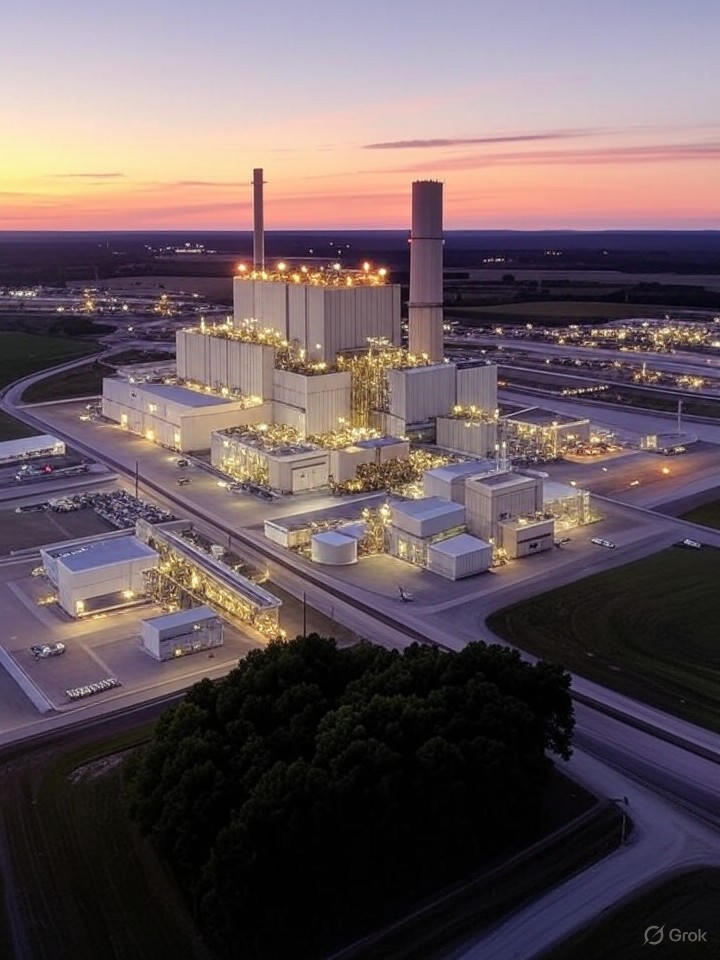In a significant development for the energy sector, Alphabet Inc.’s Google has partnered with NextEra Energy Inc. to reactivate the Duane Arnold Energy Center in Iowa. The plant, which has been inactive since 2020 due to severe storm damage, is expected to resume operations by early 2029. This initiative aims to meet the rising energy demands of Google’s expanding data centers, which are increasingly reliant on carbon-free power sources.
The resurgence of the Duane Arnold plant marks a notable trend in the tech industry, where companies are increasingly looking to nuclear energy as a viable solution to support their operations. This partnership follows Microsoft‘s agreement to restart Pennsylvania’s Three Mile Island, highlighting a growing reliance on previously decommissioned nuclear facilities to sustain the generative technologies driving the AI boom.
Strategic Nuclear Revival
The restoration plan involves substantial upgrades to the plant’s infrastructure, including its 615-megawatt reactor. Google will purchase the electricity generated, which is crucial for powering its cloud computing and AI services. Industry analysts emphasize that data centers now consume energy comparable to small cities, making nuclear power an attractive low-emission alternative to traditional fossil fuels. This aligns with Google’s goal of achieving net-zero emissions by 2030.
Beyond immediate energy needs, this initiative signifies a strategic shift within the tech sector toward revitalizing America’s aging nuclear fleet. A report from The Verge indicates that Google’s collaboration with NextEra could serve as a model for future projects, potentially unlocking substantial amounts of clean energy that have been dormant. Originally commissioned in 1974, the Duane Arnold plant was decommissioned due to economic factors and storm damage. However, advancements in reactor technology and regulatory processes now make reactivation feasible.
Experts from the Nuclear Energy Institute suggest that such revival projects could extend the operational life of existing plants, bypassing the lengthy timelines associated with constructing new facilities. This trend underscores how major technology companies are reshaping the energy landscape.
Economic Implications and Challenges
Despite its potential benefits, the restart of the Duane Arnold plant faces several challenges. Safety concerns, the impact on local communities, and the substantial costs of retrofitting aging equipment are significant considerations. Insights from CNBC highlight that the partnership will require close collaboration with state regulators to ensure grid stability, particularly as demand surges driven by AI technology could strain regional power supplies.
Economically, the revival is projected to create hundreds of jobs in Palo, Iowa, offering a much-needed boost to a community affected by the plant’s closure. For Google, this partnership provides a stable energy source amid the fluctuating outputs of renewable energy sources. This development could also influence U.S. energy policy, potentially prompting incentives for nuclear restarts, as noted by ABC News.
As tech firms increasingly position themselves as energy producers, the revival of nuclear power could accelerate the transition toward sustainable energy solutions. Google’s initiative in Iowa serves not only as a power strategy but also as a signal of how the insatiable energy demands of AI are driving innovation in one of the world’s most regulated sectors.
Looking ahead, the success of the Duane Arnold project may inspire similar initiatives across the United States, where over a dozen nuclear plants have been closed in recent years. Google’s involvement in this sector, paired with its previous engagements in nuclear energy procurement, positions the company as a frontrunner in the intersection of technology and energy.
Competitors, such as Meta Platforms Inc., are also pursuing nuclear energy options, as detailed by The Verge, suggesting a competitive landscape in the race for clean, reliable power. Ultimately, the partnership between Google and NextEra exemplifies a pragmatic approach to addressing the dual challenges posed by AI’s energy demands and climate change goals, potentially setting a precedent for future collaborations in the tech and energy sectors.







